Featured Photo Above:
Addie Joos Benefit Game, July 24, 1911
(Color Restoration by Chris Whitehouse of They Played in Color website)
Baseball History Comes Alive Now Ranked As a Top Five Website by Feedspot Among All Baseball History Websites and Blogs!
(Check out Feedspot's list of the Top 35 Baseball History websites and blogs)

Guest Submissions from Our Readers Always Welcome! Click for details
Scroll Down to Read Today’s Essay
Subscribe to Baseball History Comes Alive for automatic updates. As a Free Bonus, you’ll get instant access to my Special Report: Gary’s Handy Dandy World Series Reference Guide!
Frank “Home Run” Baker and the 1911 World Series Photo Gallery
Click on any image below to see photos in full size and to start Photo Gallery:
Let’s Recall the 1911 World Series and Frank “Home Run” Baker!
The 2023 World Series is in the record books, and so we extend our congratulations to the Texas Rangers on an exciting win, the first World Series championship in their history. Don’t forget the Rangers franchise actually started out as the expansion Washington Senators and moved to Arlinton, Texas for the 1972 season with Ted Williams as their manager. After heartbreaks in 2010 and 2011, they finally reached the Promised Land!
Today I’ll conclude my annual look at past World Series with a stop in 1911. That year’s Fall Classic featured the American League pennant-winning Philadelphia A’s of Connie Mack (101-50, .669, 13.5 games ahead of the Tigers), vs. the National League pennant-winning Giants of John McGraw (99-54, .647, 7.5 games ahead of the Cubs). The A’s were the defending World Series champions, having beaten the Cubs the previous year, while the Giants were making their first of three consecutive post-season appearances. The A’s would also win pennants in 1913 and 1914.
This was a rematch of the 1905 World Series in which the Giants bested the A’s 4-1. The games were played at the Polo Grounds and Shibe Park. The Series began on October 14 and didn’t conclude until October 26. The Series was notable for having six days of rain between games three and four, the longest delay between games in World Series history until the earthquake-interrupted 1989 World Series. The October 26 ending was also the latest-into-the-year ending to a World Series until 1981. When the Series continued with Game Four on October 24, the A’s, behind the pitching of Hall of Famer Chief Bender, beat the Giants and Christy Mathewson 4-2 to give Philadelphia a three-to-one game advantage. They eventually won the World Series, four games to two.
In the 1911 World Series, the heroics of the Athletics’ star third baseman, Frank Baker, earned him one of baseball’s greatest nicknames. His homer in Game Two off Rube Marquard provided the margin of victory in that game; and another long one in Game Three off Christy Mathewson tied that game in the ninth, eventually won by the A’s. From that moment on, Frank Baker became known as “Home Run” Baker.
Whenever I talk about Home Run Baker and the great Philadelphia teams of the 1910s, I love to point out that one of our loyal readers, Chris Baker, is actually a great-grandson of Home Run Baker. Chris is justifiably proud of his famous Hall of Fame great-grandfather. As Chris once told me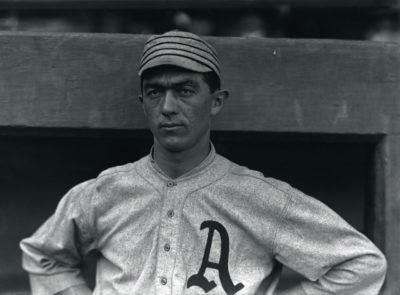
“The farm was actually his number one priority. Baseball was his sanctuary and, as we know, he played it very well. He was just a normal guy with a big heart who loved the farm…but he could play baseball and he loved it, too.”
Frank Baker’s Great Run: 1910-1914
Frank Baker, who became the Athletics’ regular third baseman in 1909, was known
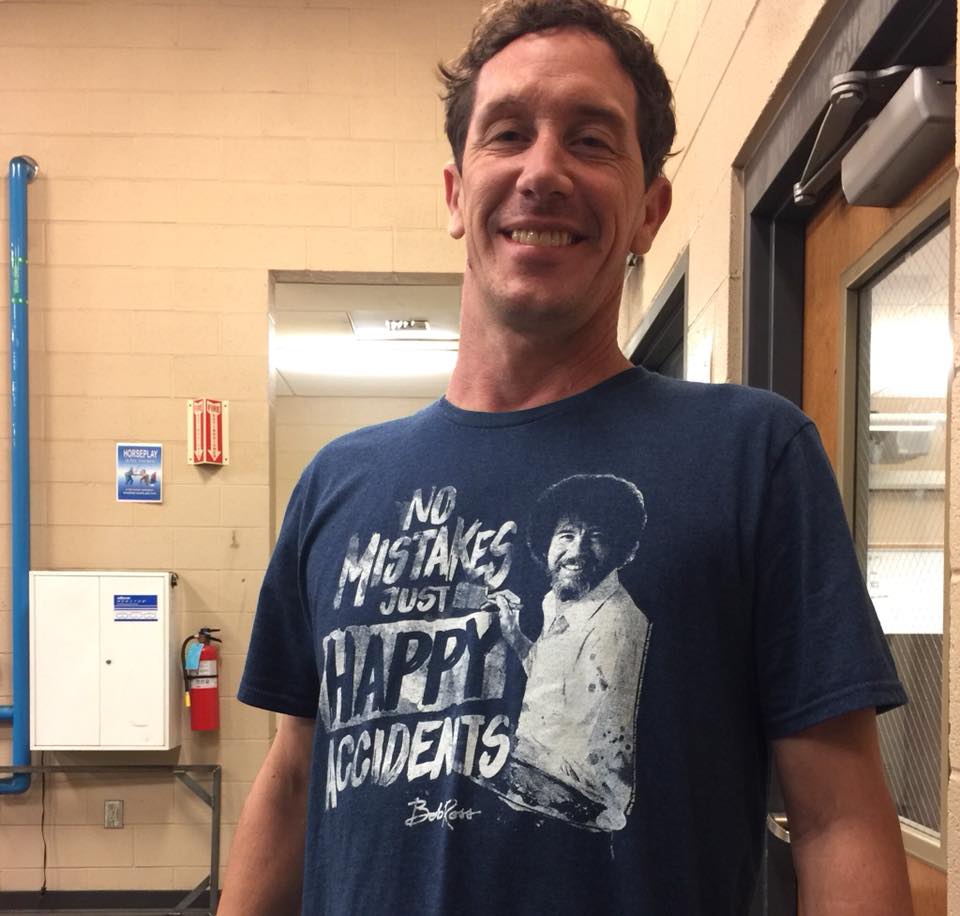
for his unusually heavy 46-ounce bat. His best years were with the A’s from 1910-1914, hitting .342 in 742 games. He led the American League in home runs every year from 1911 through 1914, leading the league in RBIs in 1912 and 1913. He finished in the top ten in batting average, slugging percentage, and on-base percentage every year from 1911 through 1914. Baker also finished in the top ten in runs, hits, doubles, total bases, extra-base hits, and RBIs every year from 1910 through 1914.
Baker hit .409 in the 1910 World Series, leading the A’s past the Cubs in five games; and hit a series-leading .375 in the 1911 World Series. Following Philadelphia’s unexpected defeat in the 1914 World Series, Connie Mack, the cash-strapped A’s owner, sold Baker to the Yankees.
Frank Baker’s Career Stats:
Over his 13 major league seasons, Baker hit .307, with 1839 hits, 915 doubles, 103 triples, 96 home runs, 235 stolen bases, a .363 on-base percentage, and a .442 slugging average. He was a member of six pennant winners, three World Championships, and he acquired a nickname that has become familiar to generations of baseball fans.
The Athletics “$100,000 Infield”
Third baseman Frank Baker was part of the A’s famous “$100,000 Infield,” along with second baseman Eddie Collins, shortstop Jack Barry, and first baseman Stuffy McInnis. Baseball historian Bill James rated the 1914 edition as the greatest infield of all time and also ranked the 1912 and 1913 editions in the top five all-time. They helped the Athletics win four American League pennants in five years (1910, 1911, 1913, and 1914), and World Series championships in 1910, 1911, and 1913.
Frank Baker was elected to the Hall of Fame in 1955, with a class that included Joe DiMaggio, Gabby Hartnett, Ted Lyons, Dazzy Vance, and Ray Schalk. He passed away on June 28, 1963.
Gary Livacari
Photo Credits: All from Google search
Information: Excerpts edited from the Frank “Home Run” Baker Wikipedia page.
Subscribe to our website, Baseball History Comes Alive with over 1400 fully categorized baseball essays and photo galleries, now surpassing the one million hits mark with 1,114,000 hits and over 950 subscribers
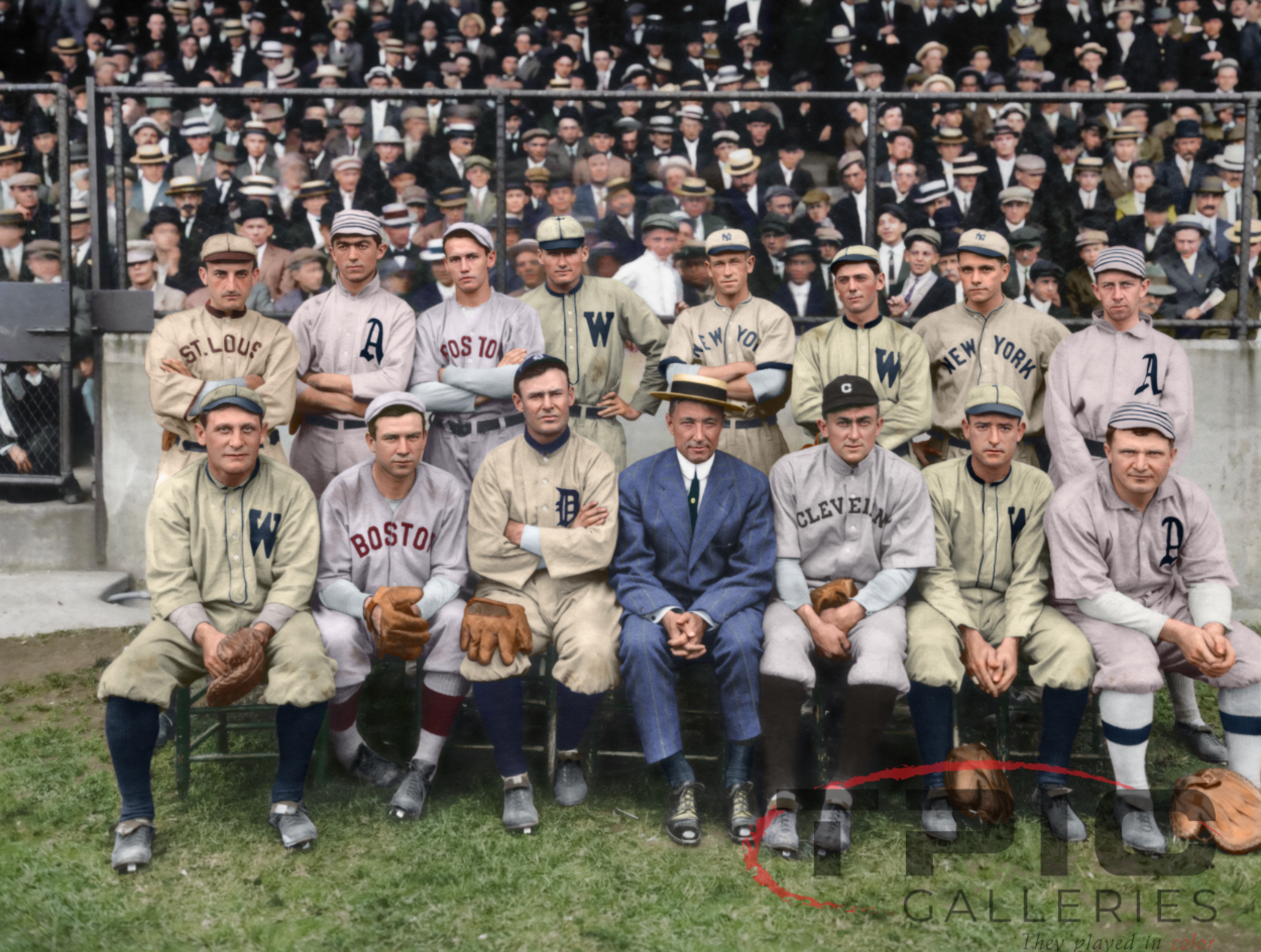
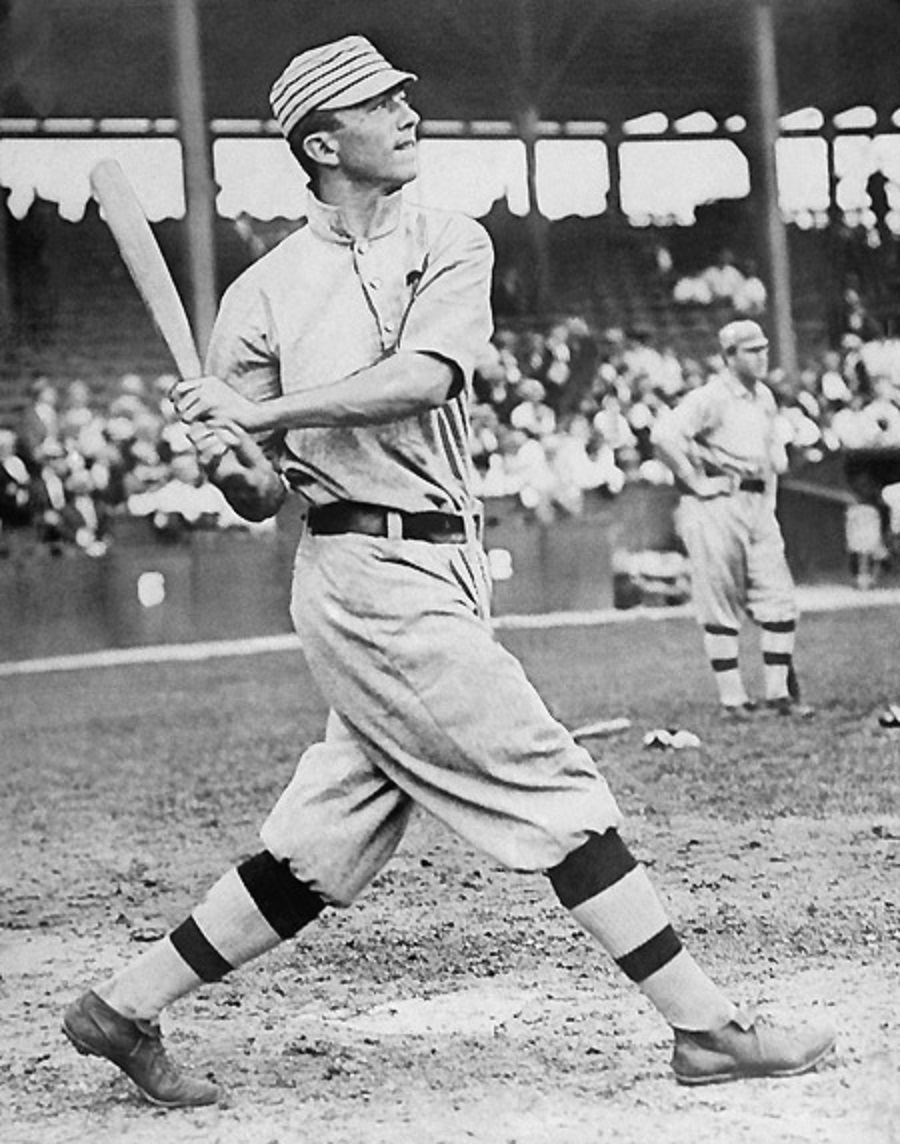
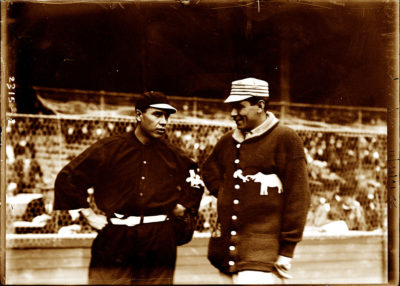
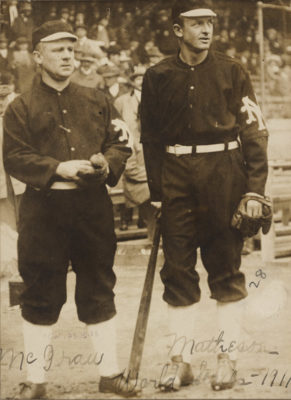
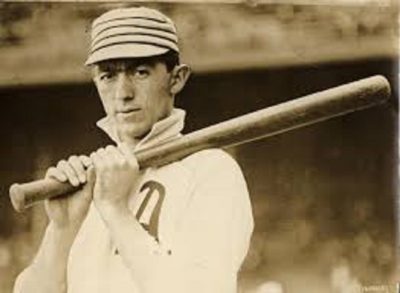
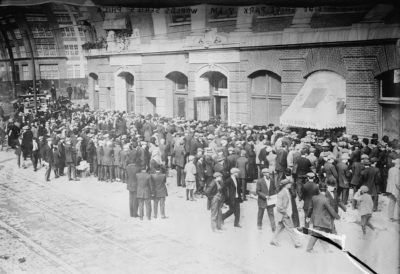
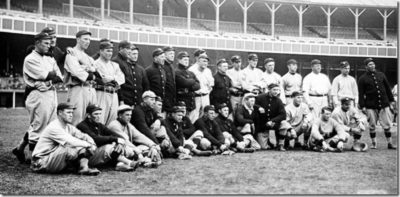
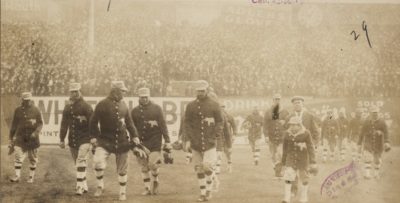
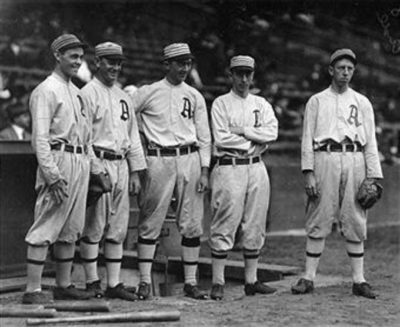
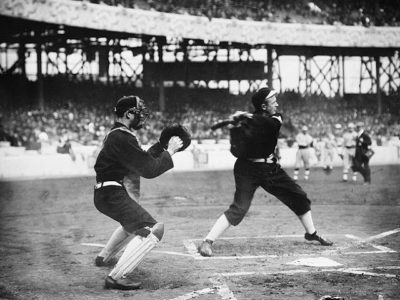
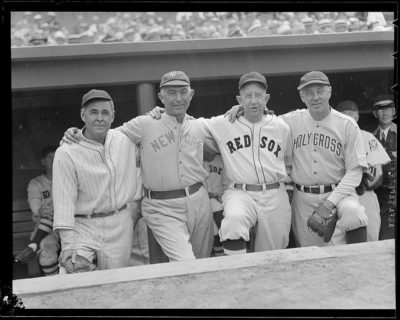
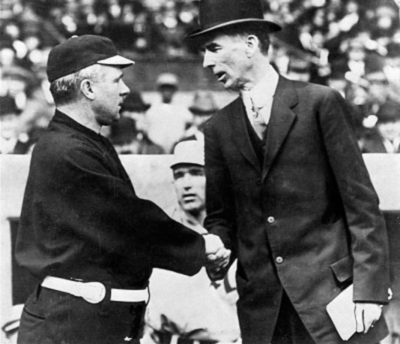
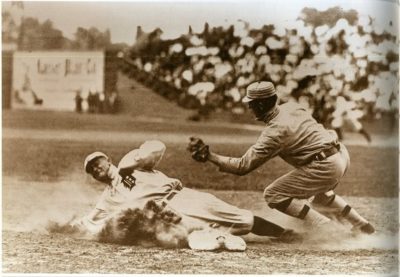
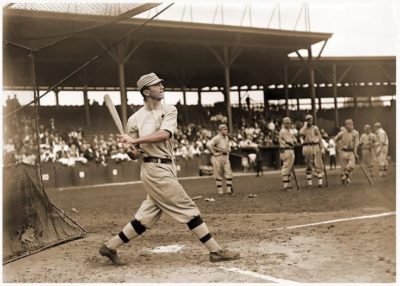
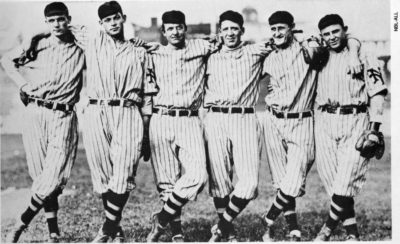
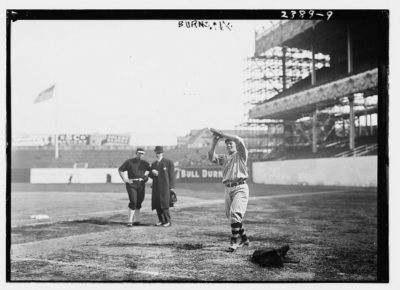
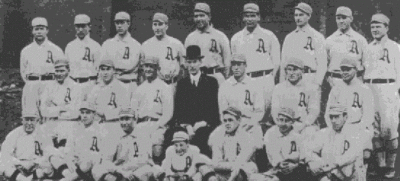
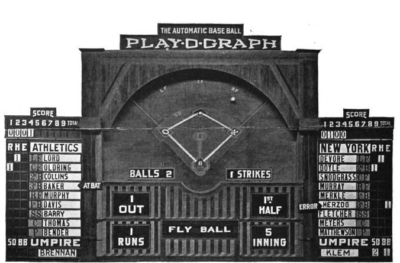
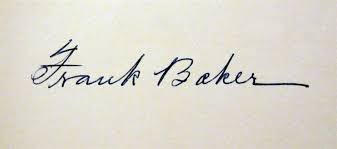
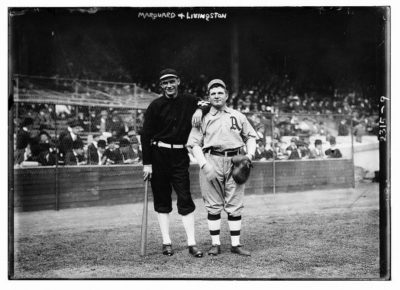
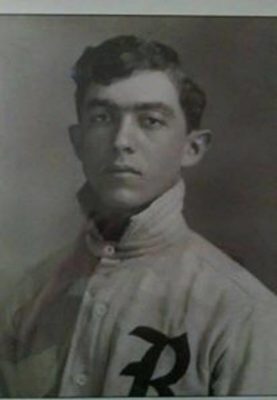
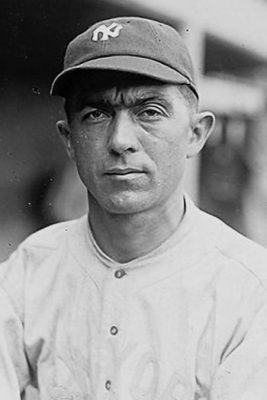
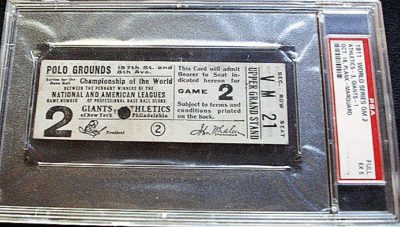
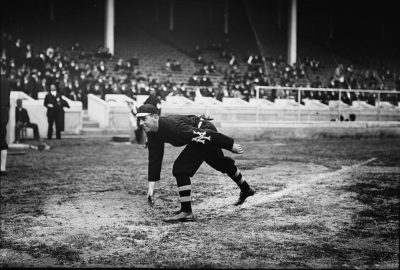
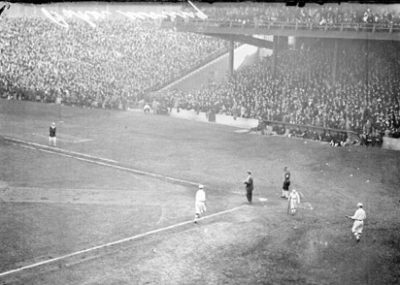
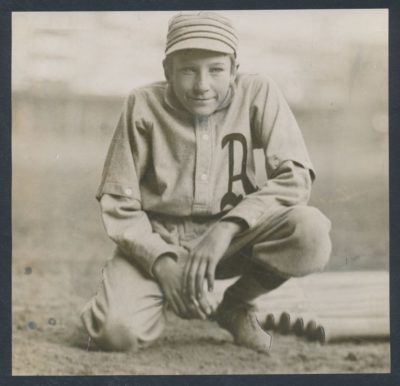
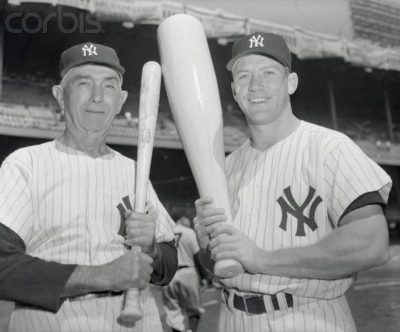
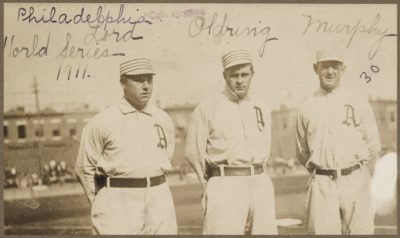
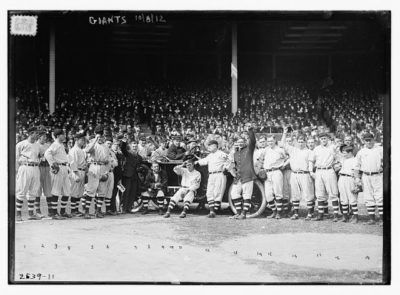
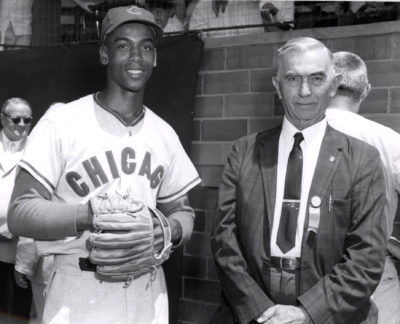
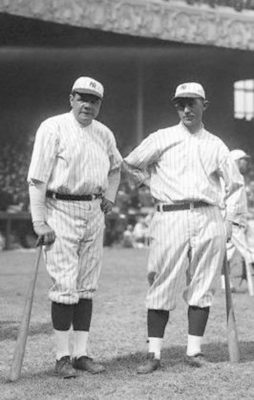

Such an informative essay about Frank Baker, Gary. I knew about his “HR” nickname, but never knew how; or why, he got that handle; until reading this. Interesting that he used a 46 oz. bat. Wonder if he could have gotten good wood; with that “log”, against today’s pitchers; the majority of whom throw 90 mph+ gas ? Of course, it’s pointless to compare today’s game with the way the game was played in a by-gone era. It’s as dis-similar as day and night. Currently, lots of free agents were announced this week. It’ll be interesting to see where they land in 2024. Enjoy this website a lot. Keep up the great work by you, and the other BHCA contributors. Thnx.
Thanks Tom!
Always fun to read your work on the game’s legends Gary. Home Run Baker hit 96 career HRs. Maybe a big reason for his nickname because he hit two in that 1911 WS – one off future HOFer Rube Marquard the other off future HOFer Christy Mathewson on the biggest stage! The powerful A’s hit 35 home runs in 1911 as a team! Baker had 11!
It sure was a different game back then…
Gary,
I’m not sure I could lift a 46-ounce bat, let alone swing it.
Early 50’s the average big-league fastball was 86 mph. Now it’s over 93. In a batting cage 90 is a blur.
In your hay day, Bill, it would have been no problem!
Baker was a teammate of Babe Ruth on the Yankees of 1921-22. Ruth out homered “Home Run” 94-16 over those two seasons despite Ruth’s suspension for part of the 1922 season. Baker was born in one of my favorite places, Trappe, MD, a town of about 1,200 residents (around 300 at the time of Baker’s birth) which sits astride U.S. Route 50 on the way from Baltimore and Washington to the Maryland and Delaware beaches. As far as I can recall, there are no stop lights along Rte. 50 in Trappe but as one approaches the town there is a sign declaring it a “speed awareness zone” whatever that may be. There is a post office and a used book store, little else. There are, as far as I can tell, no historical markers or other outward signs along the highway honoring Baker’s birthplace. That is wrong. Co-incidentally, I will be passing – and I mean passing – through Trappe tomorrow. I will look again for Baker’s long overdue recognition.
Thanks Vince…let us know if you find anything!
“Speed awareness zone” is fancy talk for Speed Trappe..🤔😁
Clever…clever…
I did read that there is a baseball field in Trappe named for him: Home Run Baker Field.
His manager of those dynasty A’s teams, Connie Mack, was born in E. Brookfield, MA.
I have passed through that town numerous times for business. There is little recognition for this HOF manager, too.
His birthplace is only recognized by a small wooden sign on the lawn, just plainly stating “ Birthplace of Connie Mack”.
Similarly there is also a baseball field named for him in town (“Connie Mack Field”) that was also the spot where a national radio broadcast conducted back in
1934 with Mack bringing his A’s team to play a local nine.
George M. Cohan, Mr Yankee Doodle Dandy, highlighted the activities.
https://www.charliesballparks.com/st/MA-EastBrookfield-Mack.htm
https://www.worthpoint.com/worthopedia/1934-connie-mack-day-celebration-1793556916
Thanks Paul. Here’s a pic from that day you mentioned. That George M. Cohan third from left and Mr. Mack fourth from left.
I remember this pic and others when I was working on the Leslie jones Boston Public Library collection identifications. https://www.baseballhistorycomesalive.com/wp-content/uploads/2023/11/1-Connie.jpg
Looks like sign dedication is at the ballpark complex named for Baker. Sorry for the scattershot comments.
Gary’s post and the fact I was up at HOF two weeks ago and saw an amazing piece of artwork by Graig Kriendler depicting a scene from the 1911 WS involving Baker got my dead ball era juices flowing.
https://www.hmdb.org/m.asp?m=168628
I stand corrected. There is one stop light along U.S. Rte. 50 in Trappe.